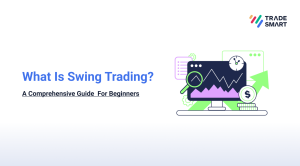
Trading is all about trying to benefit from a price movement. The earlier one gets in a rising or falling trend the higher are his chances of winning. Similarly the maximum period he holds on to the trade before the trend changes the larger profit the trader is able to corner.
Trend following
But this is easier said than done. Many successful traders have spent millions trying to find the perfect trend following strategy before they could trade with one that they are comfortable with. Many others have left the game after losing their shirts.
5-9 day short term moving average rule for share trading
One of the most famous adage in the markets is ‘Trend is your friend.’ Only if the prices move in the trader’s direction will he make money. The problem for a trader comes in trying to locate this evasive friend. Markets are known to be moving in a trend in only 30 percent of the time and consolidating or moving aimlessly for 70 percent of the time. The challenge and the struggle of the trader are clear from this data.
Nearly 70 percent of the time will be wasted in trying to locate your friend. A trader’s patience is tested in trying to locate a market or a stock which is ready to move. That is the bane of a trend following strategy.
Trend following strategies are basically those where a trader tries to capitalize on a stock or a market that is likely to go in one direction, either up or down. But as mentioned above every trend trading strategy will witness what in trading parlance is known as whipsaws. A whipsaw in trading is when the trader is stopped out after he has initiated a trade.
Since markets are consolidating nearly 70 percent of the time, trend following trading strategy results in a number of whipsaws.
Some of the best traders in the world who follow the trend following strategy are right only 40 percent of the time. But when they are right they ensure that they make enough not only to repay the losses of the 60 percent trades but also have enough in the bank to have a comfortable life style. Most successful traders have been trend followers.
Start Trading With Us
To Be A Successful Trader
Also Read : Trend, Trend lines and rule of their breaking
Moving Averages
One of the oldest and commonly used trends following strategy is by using the moving averages. Moving Average is a technical analysis tool which smoothens the day-to-day fluctuations of the market or helps in removing the ‘noise’ or volatility in the market.
A 5 day moving average is formed by taking the average closing price of five recent days. For the next day, the last trading day is removed from the calculation and the new data is added to it. This helps in keeping the moving average line as close to the markets as possible. So a 10 day moving average with take data of 10 current days and a 50 days moving average will take the data of 50 latest days.
There are two type of moving averages which are commonly used in the market. The one explained above is called the simple moving average (SMA). The second type of moving average is called the exponential moving average (EMA). EMA is more common among professional traders as it gives weightage to recent prices over past ones.
Critics of moving averages say that they are lag indicators as they use past data for their calculation and tend to move when the price has already showed its hand on which side it is likely to go. But despite this handicap moving average trading strategies have worked well for traders.
The chart below shows a 20 day EMA. One can see how closely the line follows the price trend. Another important point to note here is that the moving average acts as a support resistance line where prices touch it and move back in the original trend. Many technical analysts call the moving averages as moving trend lines.

A trader would have made good money even if he would have bought the share when the price crossed above the 20 day EMA and shorted it the moment it closes below it.
However, in reality it is not as simple as that. Consider the chart below, which also uses the same 20 period EMA. The number of times the stock has moved on either side of the moving average would have tested the patience of any trader before the stock finally moved in his direction.

The smaller period moving average will have more whipsaws than the larger period moving average. The same chart is shown but with a 200 period EMA below. It clearly shows that the trader would have held on to the trade for the entire period without getting whipsawed.

However, a drawback of longer period moving average is their lag is much more than the smaller period moving averages. Thus a trader using the longer term moving average enters a trade long after the smaller term moving average trader does. Also, exits are delayed for the longer term moving average trader.
Moving averages crossover
In order to reduce the whipsaws in using a single moving average, traders use two moving averages. This gives them the advantage of staying out of the trade a little longer when the market is range bound and at the same time it gives them the benefit of entering and exiting a trade early. In short, it combines the best of using a short term moving average and a long term moving average. It is meant to capitalize on the ‘meat’ of the trend, or the big move of the trend.
The strategy basically requires a trader to go long when the short term moving average or the faster moving average cuts the long term or slower moving average from below. The trader can exit or enter short when the shorter term moving average cuts the longer term moving average from top.
The chart below explains the trading strategy clearly.

The red line is the slower or the longer period EMA and the black line is the shorter or faster EMA.
Also Read : Stock Trading – A Lucrative Career Ahead
The 5/9 moving average rule
Selection of the moving average is critical in deciding the success of a trader. The shorter period moving averages would be very close to the top and bottom of a trend but at the same time they will witness a number of whipsaws.
The trade-off comes in bigger winning trades that offset the small losses during the whipsaws.
As in the case of any other moving average crossover strategy entry levels are when the faster moving average – in this case the 5 day EMA crosses from beneath the 9 day slower EMA. Exits in this strategy will be when the 5 day EMA crosses from above the 9 day EMA.

The key to any trend following trading strategy is money management. Losses have to be kept at the minimum especially during the period of consolidation and whipsaws. At the same time the winners have to be taken advantage to the fullest and not falling to the urge of booking profits early.
The point worth remembering in trading a trend following strategy is that even the best traders in the world are right only 40 percent of the time. They too grind it out 60 percent of the time, but when they are right they do not lose their cool.
Use this Strategy Now
Start Trading Here
[email-subscribers namefield=”NO” desc=”Subscribe now to get latest updates!” group=”Public”]













Never mind I figured it out. Good article.
Hi Rnieman,
Please elaborate your query.
Is the red the 5 or 9?
[…] Also Read : The 5-9 Day Short Term Moving Average Rule […]